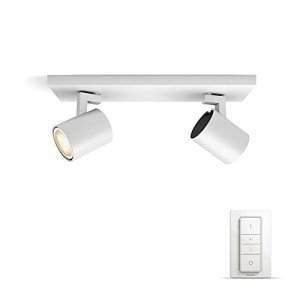10 Easy Ways To Figure Out Your Interior Lighting UK
Interior Lighting in the UK: A Comprehensive Guide
Interior lighting plays an essential function in creating an environment, boosting functionality, and revealing individual design within homes and organizations. In the UK, where the weather can be unforeseeable, efficient lighting is not only about aesthetics however also about making spaces feel warm, welcoming, and practical. This post explores various elements of interior lighting, including types, patterns, tips, and often asked questions.
Comprehending the Importance of Interior Lighting
Lighting is typically thought about the backbone of interior style. It influences mood, performance, and the viewed size of spaces. The right lighting can:
- Enhance the architectural features of a room.
- Emphasize art work and decor.
- Enhance safety and security.
- Impact efficiency in work spaces.
- Develop a comfortable atmosphere for relaxation.
Kinds Of Interior Lighting
Reliable lighting design typically includes 3 main types of lighting: ambient, job, and accent.
1. Ambient Lighting
This is the primary source of light in a room, supplying general illumination. Common sources include:
- Ceiling-mounted fixtures
- Chandeliers
- Recessed lighting
- Soft wall sconces
Ambient lighting creates a foundation from which other lighting types can build on.
2. Task Lighting
Task lighting concentrates on specific locations to facilitate activities such as reading, cooking, or working. This kind of lighting assists to minimize eye pressure and can significantly affect functionality. Typical sources include:
- Desk lamps
- Under-cabinet lights in kitchens
- Reading lamps beside beds
- Mounted lights targeted at work surface areas
3. Accent Lighting
Accent lighting adds drama and highlights specific objects or locations, such as artwork or architectural features. blog of lighting can develop visual interest and depth in a space. Sources include:
- Picture lights
- Decorative lamps
- Uplighters
- LED strip lights along racks
Using a combination of these lighting types can result in a healthy and multifunctional space.
Popular Lighting Trends in the UK
The interior lighting landscape in the UK continues to develop, influenced by design trends, innovation, and consumer choices. Here are some popular patterns to watch:
Smart Lighting: The introduction of smart technology has actually transformed how people handle lighting in their homes. Smart bulbs and systems like Philips Hue allow users to manage brightness and color temperature through their smartphones.
Minimalist Designs: Sleek, basic designs that mix seamlessly with interiors are dominating the marketplace. Pendant lights with delicate frames, LED strips, and geometric shapes are especially fashionable.
Industrial Lighting: This pattern showcases raw, discovered products. Metal fixtures and Edison bulbs offer a vintage touch that is both trendy and practical.
Eco-Friendly Options: With increasing awareness of sustainability, numerous consumers are turning to energy-efficient LED options and fixtures made from sustainable products.
Tips for Effective Interior Lighting Design
Creating an efficient lighting plan requires thoughtful factor to consider of various aspects. Here are some ideas:
Consider the Purpose of Each Room: Every space has a various function. Consider what activities will take location and what type of lighting will support those activities.
Layer Lighting: Employ multiple kinds of lighting within a room to develop depth and versatility. Combine ambient, job, and accent lighting to improve both aesthetic appeals and functionality.
Usage Dimmers: Dimmers permit control over brightness levels, making it possible for users to change lighting according to state of mind and time of day.
Integrate Natural Light: Make the most of natural source of lights like windows. Buy Hallway Lighting UK , reflective colors for walls and furnishings to take full advantage of brightness.
Consider Color Temperature: Different color temperatures (determined in Kelvins) develop different atmospheres. Warmer temperatures (around 2700K-3000K) are comfortable, while cooler temperature levels (4000K+) provide a more medical or energetic feel.
Interior Lighting Mistakes to Avoid
To develop a well-lit space, it's necessary to avoid common lighting risks. Here are some mistakes to expect:
Underestimating Wattage: Insufficient wattage can cause dim, unwelcoming areas.
Ignoring Scale: Fixtures that are too small for a room can keep an eye out of place, while oversized fixtures can overwhelm an area.
Over-reliance on Ceiling Lights: Relying entirely on overhead lighting can create uninviting shadows; balance with additional lighting types.
Poor Placement: Misplaced lights can create areas that are too intense or too dark. Buy Stair Lights UK .
FAQ Section
1. What is the distinction between warm white and cool white light?
Warm white light (2700K to 3000K) creates a cozy, welcoming environment, ideal for living spaces and bed rooms, while cool white light (4000K to 5000K) is more fit for workspaces as it boosts concentration and clarity.
2. How can I take full advantage of natural light in my home?
To take full advantage of natural light, use light-colored walls, strategically location mirrors to show light, and decide for sheer window coverings that enable sunshine to pass through.
3. How do I select the ideal light fixtures?
Consider the size of your area, the style of your design, and the function of the location. Ensure the scale of fixtures matches the room and matches the general aesthetic.
4. Are LED lights better than traditional bulbs?
Yes, LED lights are more energy-efficient, have a longer life-span, and can supply a variety of color temperatures, making them a more sustainable lighting option.
5. What should I do if certain locations of my room stay too dark?
Think about including extra job or accent lighting to lighten up those locations. Floor lamps, wall sconces, or perhaps tactically positioned table lamps can help ease dark areas.
Interior lighting is a vital aspect of home and organization style across the UK. Comprehending the different types, existing trends, and best practices can help homeowner in producing spaces that are not just elegant but also practical. With thoughtful factor to consider and preparation, effective lighting can change any environment, improving both atmosphere and functionality for several years to come.
